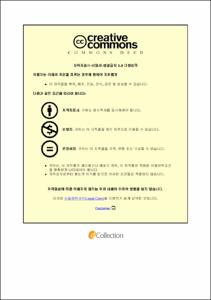Bactericidal Activity of Marine Algae Extracts Against Biofilm-Forming Pathogenic Bacteria
- Abstract
- Antibiotic-resistant bacteria are becoming more widespread and communities, necessitating the development of new strategies. Marine species are believed to be one of the possible origins of a broad range of bioactive substances that can be used to combat a wide range of biological activities. As a result, algae, especially marine brown algae and green algae, were adopted to examine their bactericidal activity towards biofilm-forming human bacterial pathogens. It was examined the extract of Sargassum aquifolium (Turner) C. Agardh (Phyophyceae) and Ulva lactuca (Chlorophyceae) for the relevant bioactive compounds either alone or in combination with commercially available antibiotics and with naturally derived antibacterial agents. Antibacterial activity was determined using disk diffusion and broth microdilution assays, and Fractional inhibitory concentration (FIC) was determined using the checkerboard broth microdilution method towards Gram-positive and Gram-negative biofilm-forming bacteria. Furthermore, using gas-chromatography-mass spectroscopy, the active compound present in the extracts was established (GC-MS). A total of 21 and 32 bioactive compounds with various chemical natures were detected using GC-MS analysis in ethanolic extracts of S. aquifolium (Turner) C. Agardh and U. lactuca n-hexane extracts, respectively. The crude ethanolic extraction S. aquifolium (Turner) C. Agardh was fractionated sequentially from less to intense polarity using the eluotropic sequence. The ethanolic extract has the maximum zone of inhibition on Listeria monocytogenes with a value of 38.00±0.17 mm, and the lowest was 10.67±0.06 mm for ethyl acetate fraction on Pseudomonas aeruginosa. Ethyl acetate fractionates showed a higher effectivity than other fractionations. The 256 μg/mL MIC value was recorded towards Staphylococcus aureus and L. monocytogenes and 512 μg/mL against Escherichia coli and P. aeruginosa. Its ethanolic extract also showed synergism with oxytetracycline on S. aureus, L. monocytogenes, and E. coli. Furthermore, the same extracts also showed synergism with tetracycline on E. coli and with erythromycin on P. aeruginosa. The extractions of U. lactuca were carried out using water and different organic solvents (ethanol, n-hexane, dichloromethane, and ethyl acetate). The antibacterial effectiveness of U. lactuca n-hexane extract against tested pathogens was the highest of any extract studied, with the minimum bactericidal concentration (MBC) and lowest minimum inhibitory concentration (MIC) values. Furthermore, n-hexane extracts have been used to increase the potency of naturally derived (from plants and aquatic organisms) compounds as well as conventional antibiotics after being augmented at sub-MIC amounts. Most studied antibiotics and natural medicines showed synergistic and additive antimicrobial effect against the tested bacterial species while used at sub-MIC levels. The bactericidal activity of S. aquifolium (Turner) C. Agardh ethanolic extract and U. lactuca n-hexane extract against human pathogenic bacteria is documented in this study. Also, it describes the combinatorial action of old-fashioned antibiotics and naturally derived bactericidal agents towards both types of bacterial pathogens.
Keywords: Antibacterial; algae, extract, natural anti-bacterial agents, pathogenic bacteria
- Issued Date
- 2021
- Awarded Date
- 2021. 8
- Type
- Dissertation
- Publisher
- 부경대학교
- Affiliation
- 부경대학교 대학원
- Department
- 대학원 식품공학과
- Advisor
- 김영목
- Table Of Contents
- Chapter 1 Introduction 1
1. Emerging of antibiotic-resistance bacteria 2
2. Natural antibacterial agents 4
3. Marine organisms as sources of secondary metabolites 4
4. Antibacterial secondary metabolites isolated from marine algae 5
5. Augmenting the naturally derived drugs into the biological origin extracts 6
6. Clinical significance of pathogenic bacteria 10
7. Objectives of this study 12
Chapter 2 Materials and Methods 13
1. Sample collection and preparation 14
2. Seaweed extract preparation 17
2.1 S. aquifolium (Turner) C. Agardh extract preparation 17
2.2 U. lactuca extract preparation 19
3. Bacterial strains, culture media, growth conditions, and chemicals 21
4. Antibacterial susceptibility assays 22
4.1 Analysis of inhibition zones by disk diffusion assay 22
4.2 Broth microdilution assay 23
4.2.1 Minimum inhibitory concentration determination (MIC) of S. aquifolium (Turner) C. Agardh extract and solvent-soluble fractions 23
4.2.2 MIC determination of U. lactuca extracts 24
4.3 Determination of minimum bactericidal concentration (MBC) 26
4.4 Assay for in-vitro synergy 28
4.4.1 Fractional inhibitory concentration assay (FIC) 28
4.4.1.1 FIC assay for in-vitro synergy of the S. aquifolium (Turner) C. Agardh extract augmented with antibiotics 29
4.4.1.2 FIC assay for in- vitro synergy of the U. lactuca extract augmented with antibiotics and natural antibacterial agents 29
4.5 Bioactive molecules by gas chromatography-mass spectroscopy (GC-MS) 30
4.6 Statistical analysis 31
Chapter 3 Results and Discussion 32
Part 1. Antibacterial Potential of S. aquifolium (Turner) C. Agardh towards biofilm-forming bacterial pathogens 33
1. Zones of inhibition by disk diffusion assay 33
2. MIC of S. aquifolium (Turner) C. Agardh extract 39
3. MBC of S. aquifolium (Turner) C. Agardh extract 41
4. Combinatorial effect of ethanolic extract of S. aquifolium (Turner) C. Agardh with antibiotics 43
5. Bioactive components analysis by GC-MS of S. aquifolium (Turner) C.Agardh ethanolic extract 45
Part 2. Combinatorial application for biofilm-forming bacterial pathogens:Naturaly derived antimicrobial drugs and old-fashioned antibiotics augmented with U. lactuca extract 48
1. MIC and MBC of n-hexane extract of U. lactuca and natural single Compounds 48
2. Synergistic effect of U. lactuca n-hexane extract with sub-MIC of natural single compounds and antibiotics 51
3. Bioactive molecules analysis by GC-MS of U. lactuca n-hexane extract 56
Chapter 4 Summary and Conclusions 60
Abstract (in Korean) 63
Acknowledgements 65
References 67
- Degree
- Master
- Files in This Item:
-
-
Download
 Bactericidal Activity of Marine Algae Extracts Against Biofilm-Forming Pathogenic Bacteria.pdf
기타 데이터 / 1.77 MB / Adobe PDF
Bactericidal Activity of Marine Algae Extracts Against Biofilm-Forming Pathogenic Bacteria.pdf
기타 데이터 / 1.77 MB / Adobe PDF
-
Items in Repository are protected by copyright, with all rights reserved, unless otherwise indicated.